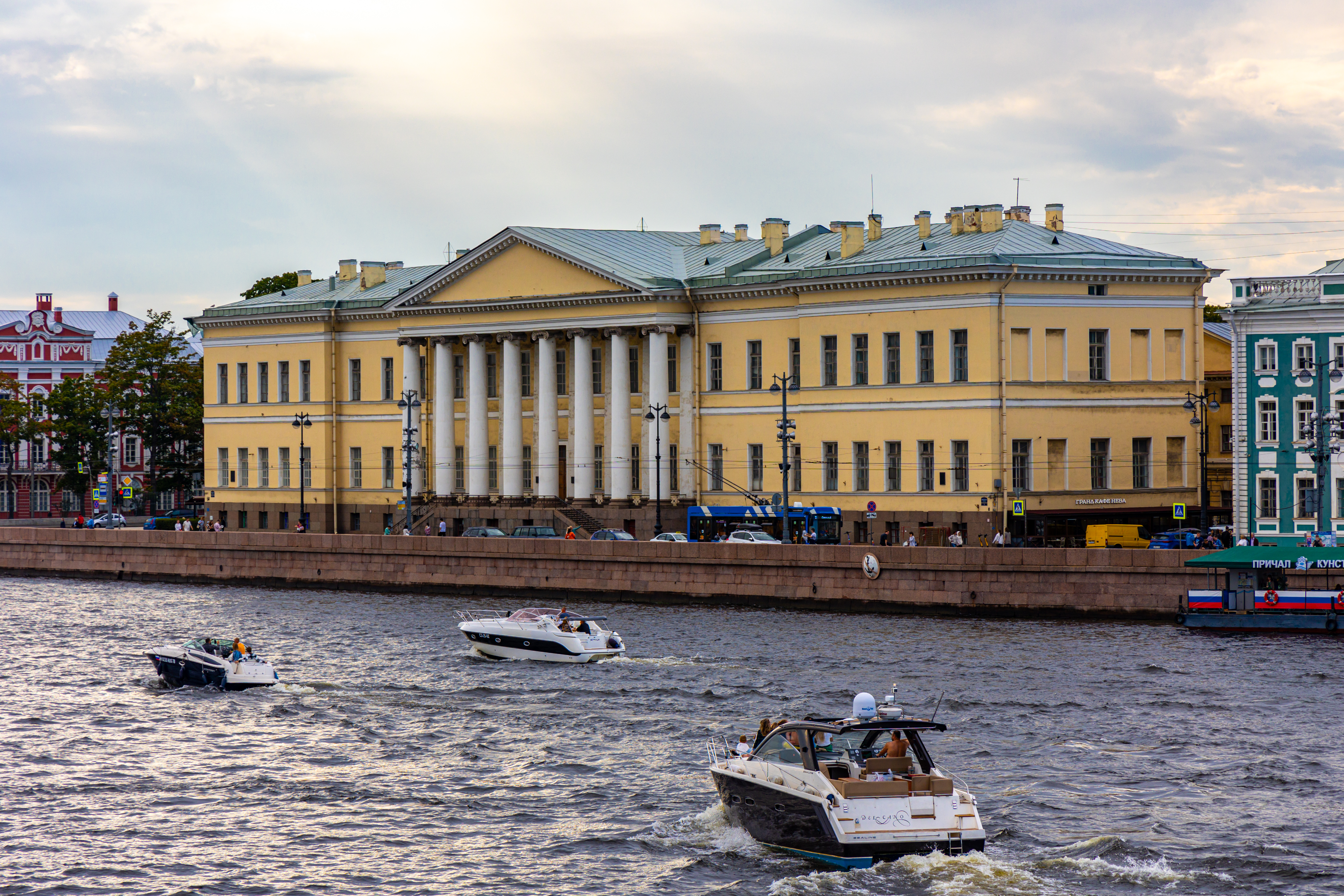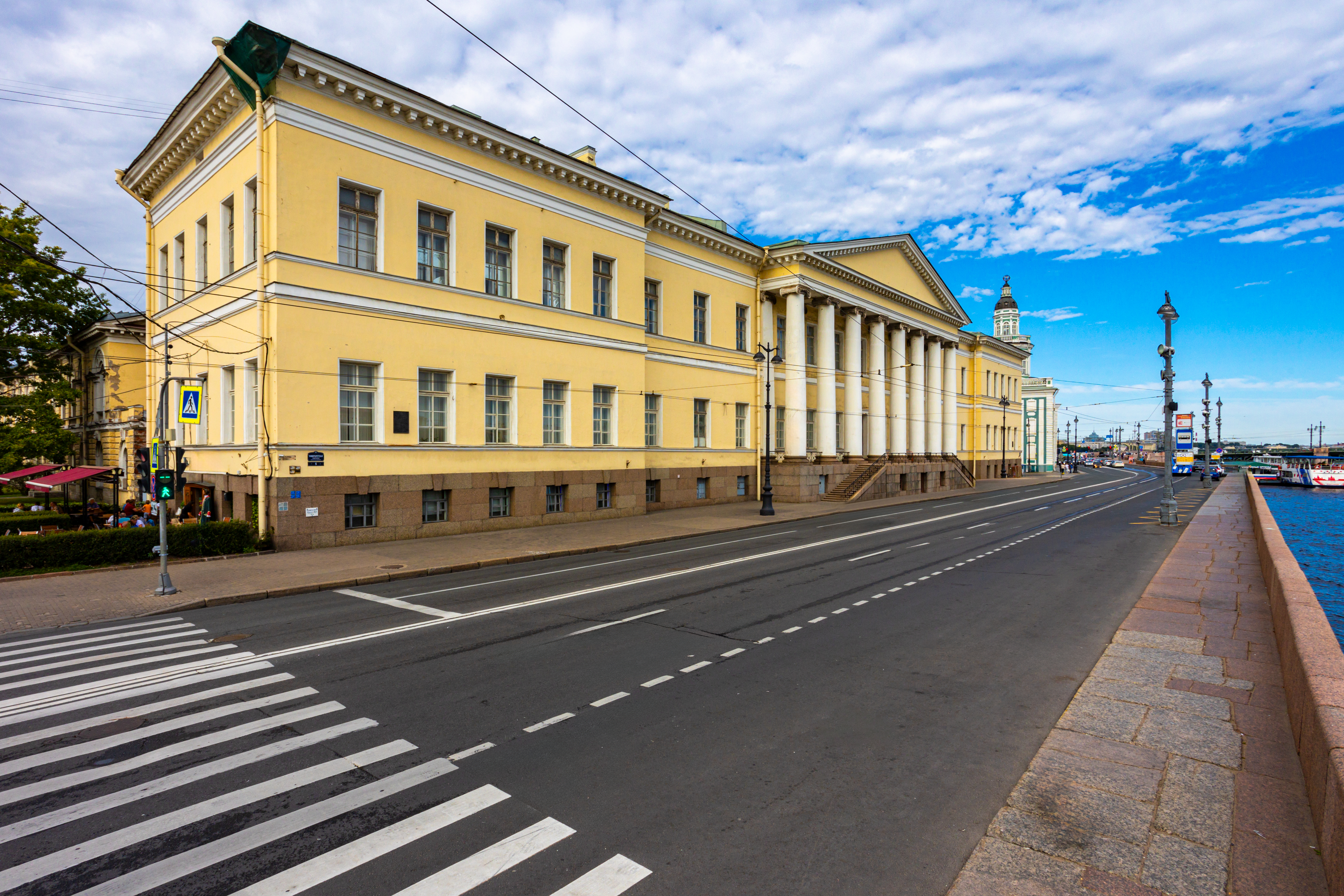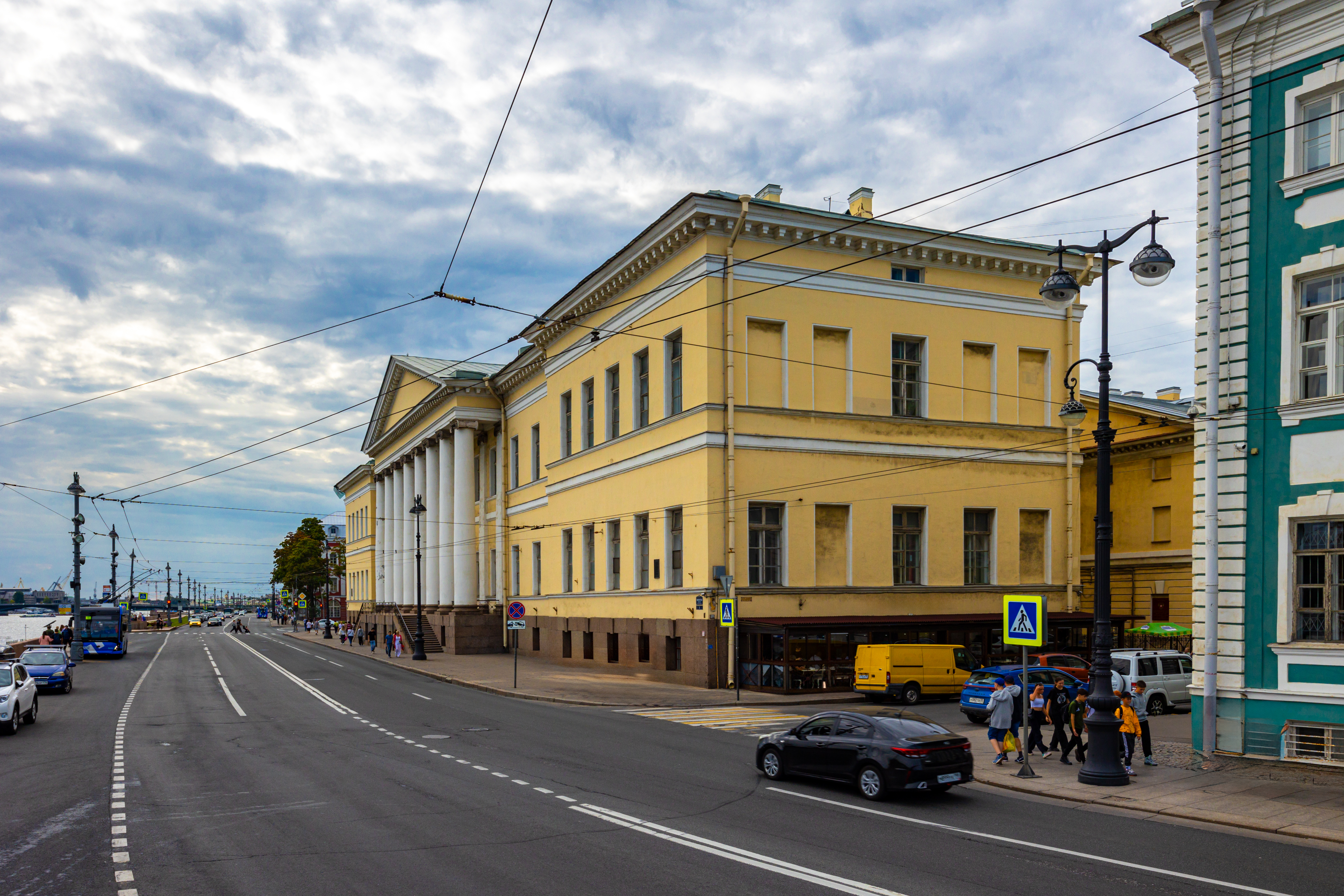 Back
Back
St.Petersburg Academy of Science

St. Petersburg, Universitetskaya nab., 5
The building of the Academy is a monument of strict classicism.
Russian Academy of Sciences was created according to the plan of Peter I, who understood the importance of scientific thought, education and culture for the prosperity of the country. Caring about the correspondence of the Academy's activities to the world level, Peter I invited leading foreign scientists to work for the new institution. Among the first were mathematicians Nikolai and Daniil Bernoulli, Christian Goldbach, physicist Georg Bülfinger, astronomer and geographer Joseph Delil, historian G.F. Miller. In 1727, Leonard Euler became a member of the Academy.
The building of the Academy, which we see today, was erected under Catherine II, who considered herself the successor of the affairs of Peter. The site west of the Kunstkamera was transferred to the Academy of Sciences in 1783. Construction under the supervision of architect G. Quarenghi was completed by 1787. The length of the facade of the building is 100.97 meters, the center is highlighted by a powerful portico of eight ionic columns and external granite stairs. The Academy building has become a symbol of the classical style in the architecture of St. Petersburg and one of the best creations of Quarenghi.
The internal arrangement of the Academy of Sciences building was completed only by the centennial of this scientific institution, by 1824. By this time, a conference hall, rooms of the committee of the board, a physical office, apartments of academicians and employees of the academy, a newspaper expedition (a post office department that distributes newspapers) and other services were located here.
One way or another, the activity of almost all outstanding Russian scientists from the 18th to the first quarter of the 20th century was connected with Saint Petersburg Academy of Sciences. Among them are mathematicians P. L. Chebyshev, M. V. Ostrogradsky and A. N. Krylov, chemist A. M. Butlerov, physiologist I. P. Pavlov, geologist A. P. Karpinsky, natural scientist V. I. Vernadsky. The small conference hall of the Academy of Sciences building is associated with the activities of V.I. Lenin. Here, in the spring and autumn sessions of 1891, he took exams at the law faculty of St. Petersburg University.
In 1826, the development plan for the quarter behind the building on the embankment was approved. Here, by 1831, the museum wing of the Academy of Sciences was built (Birzhevoy passage, house No. 2). In 1828, the Physics Office had been transferred from the Kunstkamera to the Academy of Sciences, which was transformed into a Physics Laboratory at the beginning of the 20th century. On the basis of this laboratory, the Mathematics Office and the Seismic Commission, the Physics and Mathematics Institute was formed in 1921.
There have been some changes in the appearance of the building of the Academy of Sciences throughout its existence. In 1881, a wooden fence made on the basis of Quarenghi's drawing between the columns of the portico and on the descents of the main staircase was replaced by a metal grate.
In preparation for the celebration of the 200th anniversary of the Academy of Sciences in 1925, the mosaic painting "Poltava Battle", created by Mikhail Lomonosov in 1764, was placed on the upper platform of the main staircase. In 1934, the Presidium of the USSR Academy of Sciences was transferred to Moscow, leaving the archive, library and Leningrad Scientific Center of the USSR Research Institute in the old building. In the 1930s, the N. Y. Marr Institute of Language and Thinking worked in the building on the banks of the Neva and the apartment of the mathematician and shipbuilder A.N. Krylov was located here from 1937 to 1945.
For a long time in the building housed the Administrative Department of Leningrad institutions of the USSR Academy of Sciences and the Institute of Theoretical Astronomy worked in the Museum wing in the 1950s and 1960s. A marble plaque is mounted on the basement of the building, showing the rise of the water level in the Neva during the 1924 flood.
Currently, the building of the Academy of Sciences houses the St. Petersburg Scientific Center of the Russian Academy of Sciences.






 Listen
Listen  Download
Download